ROMEO & JULIET
Design Process Notes
Theatre Fairfield
director: Barbra Berlovitz
sets: Yevgenia Nayberg
lights: Lynne Chase
costumes: Sonya Berlovitz
Unromantic Moonlight, Suffocating Sun and a Soft Morning Glow
Our design meetings at Theatre Fairfield began with lots of intriguing and visually juicy ideas from director Barbra Berlovitz (Founding Artistic Director Theatre de la Jeune Lune: 1979-2006) These are some of my notes.

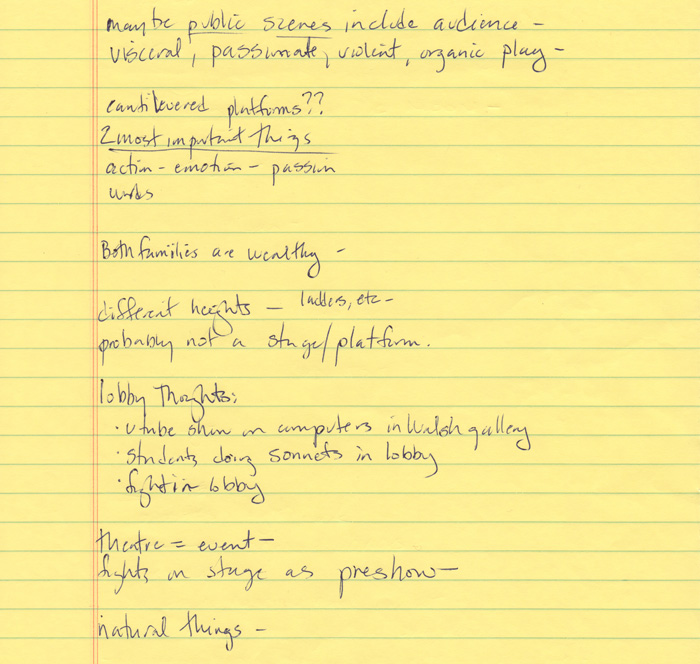
There are lots on fun words here: violent, dark, animalistic, passionate, visceral, organic
By our next meeting, some color thoughts were emerging for costumes:

And scenery

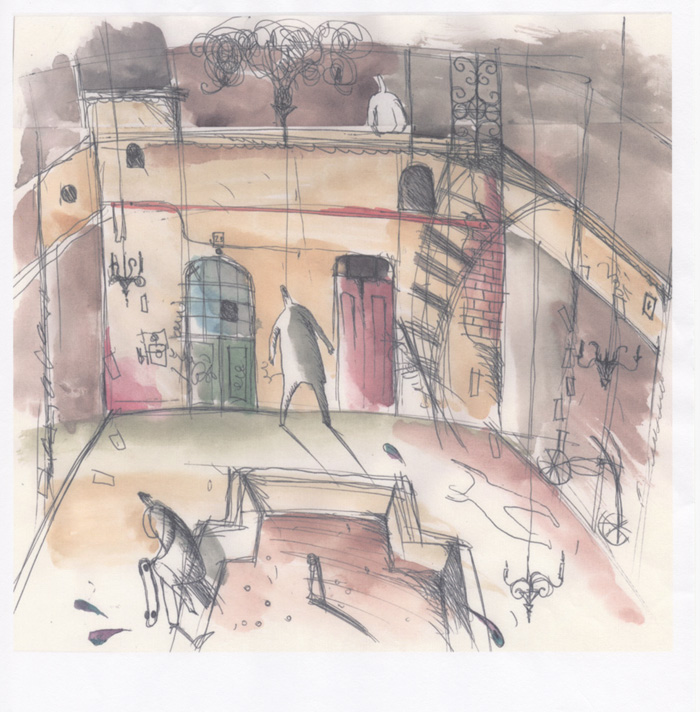
The set, at this point, consisted of a fountain at center stage in our square black box space and seats in a thrust configuration. Against the upstage side of the room, there was a wall containing a variety of doors and windows. Many items in this early sketch were adjusted, but this color palette and the major scenic elements remained. Drawing by Zhenya Nayberg. Used with permission.
Lighting Ideas from Barbra
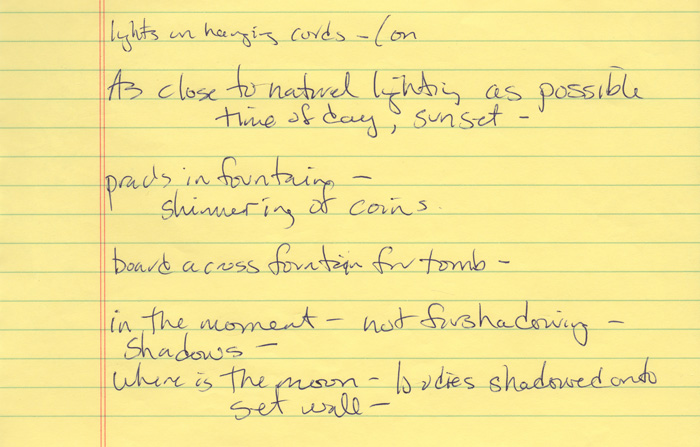
In keeping with the idea that the lighting should be as natural as possible, Barbra noted that the action happens during a 4 day span and articulated the time of day and location on the set of each scene.
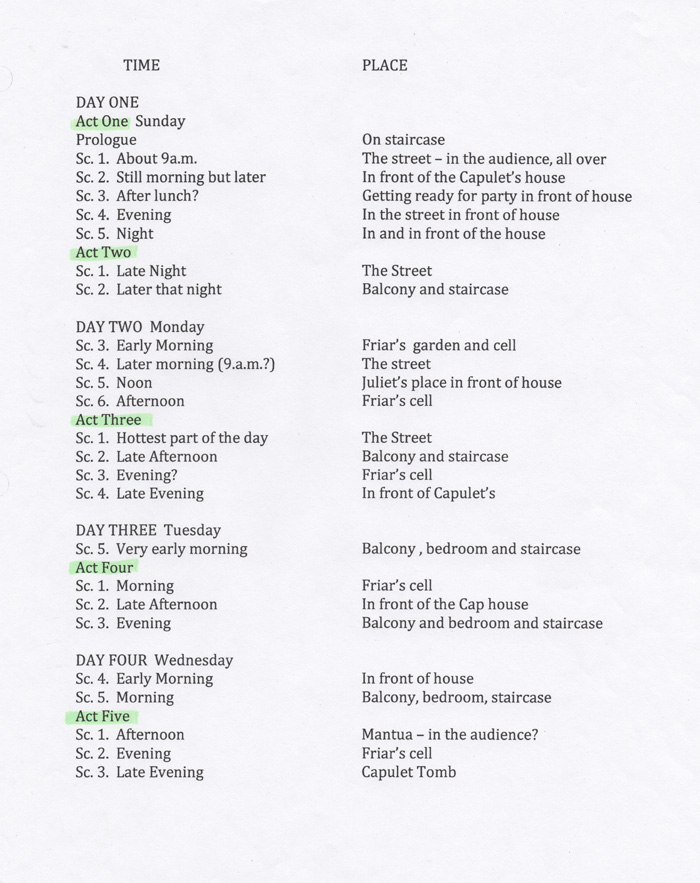
Scene breakdown by Barbra Berlovitz. Used with permission.
Putting this together, I developed the following chart of lighting ideas.

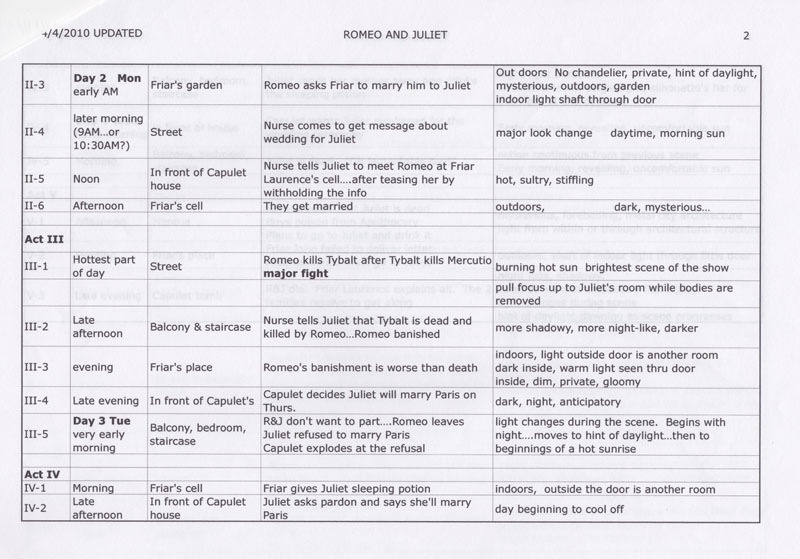
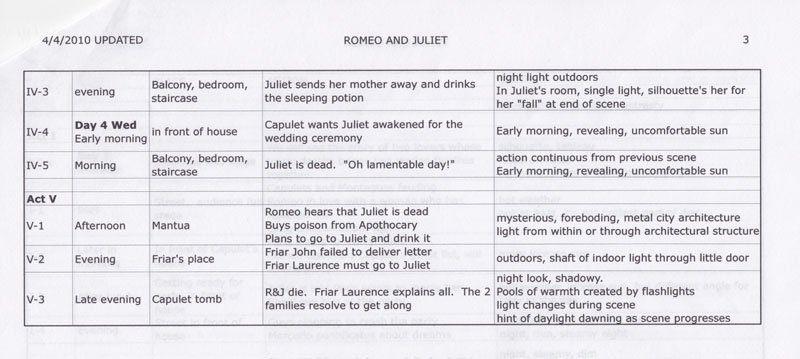
This was a collaborative effort with the director. Once we were on the same page, these ideas became the underpinnings of the plot and the cues.
In parallel with this, the scene design process progressed. Some scenic elements were adjusted.

This shows a later version of the upstage wall. The door and window arrangement is what we used. The color palette more closely resembled the larger sketch above. Drawing by Zhenya Nayberg. Used with permission.
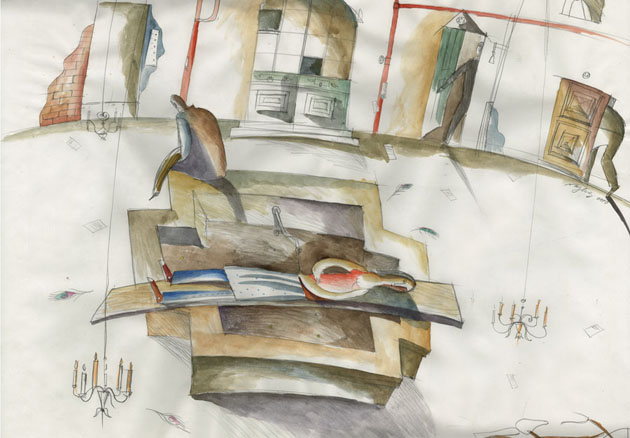
A third view of the set which shows the fountain's use for the tomb scene. (I'm especially fond of the people tiptoeing in and out of doors.) Drawing by Yevgenia Nayberg. Used with permission.
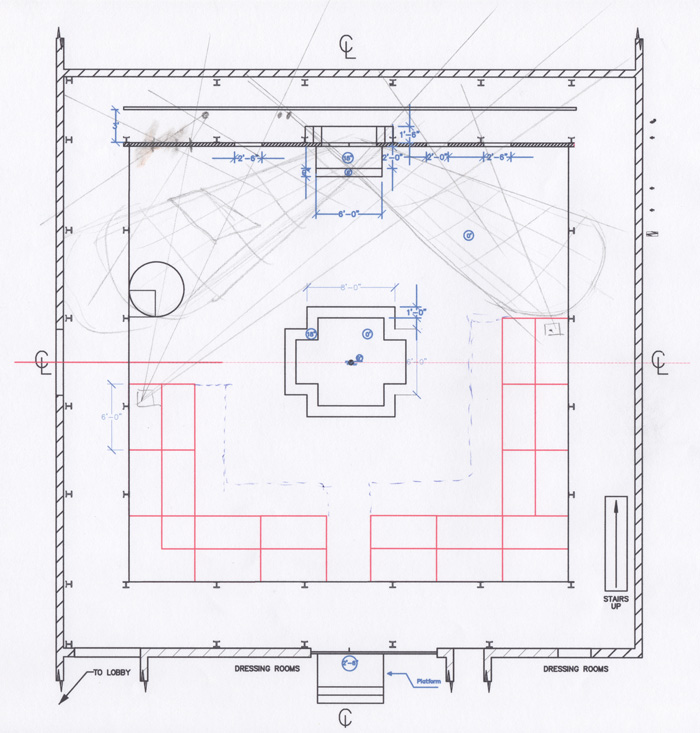
The groundplan
Our square black box space has a catwalk on all four sides. The spiral staircase stage right provided on stage access. The audience sat in a thrust configuration around the fountain. Drawing by Zhenya Nayberg. Used with permission.
The Montague-Capulet Feud
During rehearsal I took notes about individual scene characteristics that were important to lighting such as major location on stage and environmental comments that were made as they related to acting. The first scene is emotionally tense. One small provocation can set off a fight. It is morning and very hot.

Rehearsal note
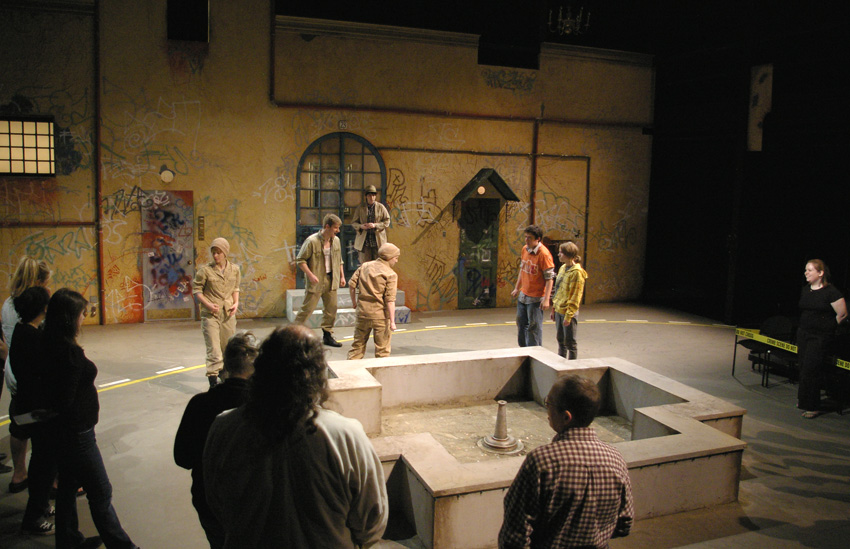
A confrontation is developing between the Capulets and Montagues. The audience is standing--their seats are roped off with caution tape. They will not be allowed to sit until after this fight is over. It's early morning on a hot day.
The Party
The party was a full stage scene staged as a masked ball with lots of dancing. It was confrontational and edgy, with sparkly chandeliers, and puddles of warmth within a nighttime look.
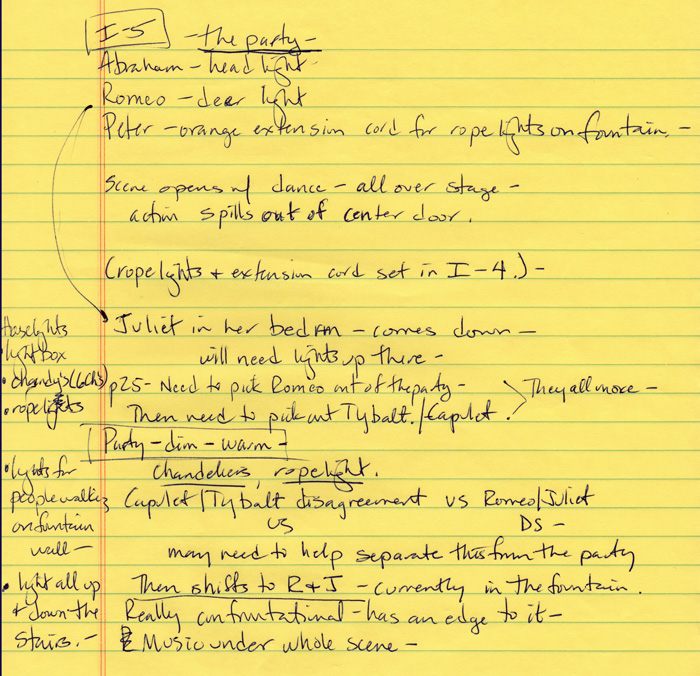
Rehearsal notes

All the chandeliers are lowered nearly to the floor and are on for the celebration. Ropelights on the fountain are on. Warmth is infused into the nighttime look with texture and puddles of light coming thru the windows and doors.

Because there was much activity all over the stage, lighting was used to help pick out the scripted action. Here, Tybalt vows to uphold the family's honor.
The Balcony Scene
Barbra emphasized the violent, passionate, emotional nature of this story. When Romeo appears outside Juliet's window under cover of darkness, he is risking his life. It's not just a scene about romance, it's about danger. If Romeo is caught, he's dead.
There is moonlight, but what qualities does it have? Many people think of moonlight as romantic. But the light from a full moon can have as much variety as the light from the sun. (In fact, it IS light from the sun!) It can glare. It can silhouette. It can make dark shadows. It can conceal. It can reveal. It can be uncomfortable. It can make patterns of highlight and shadow, light and darkness. It can be difficult to see by, both because it is dim, but also because it is a single point source and can glare. Romeo is in danger. I chose to avoid making the moonlight a deep romantic blue.
Since we were setting the play in 2010, there was electricity. If Juliet turned on the light in her room, it could throw a shaft of light outside and light up Romeo hiding in the shadows. This light would be brighter than the moon. Visually, this scene ended up being more about Juliet's light than about moonlight.
These are the rehearsal notes that I took.
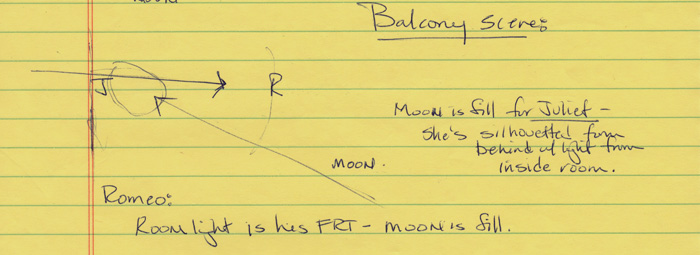
With Juliet's room on the catwalk SR (at the top of the spiral stairs) and Romeo at the fountain SL, I set up the lights so that Juliet's room light would be the source for Romeo's face, and a backlight for Juliet. The Moon, from SL toward SR, would be fill for Romeo and the source light for Juliet.
I began playing with geometry for the light from Juliet's room and came up with this:
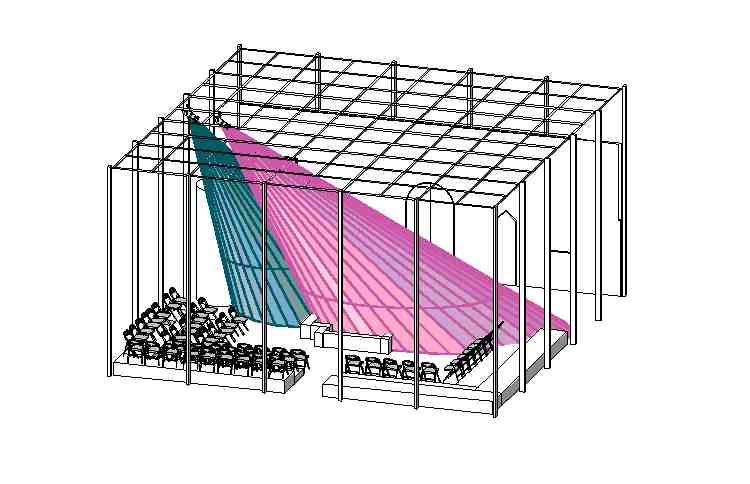
To cover Romeo's blocking for this specialized scene, I needed two units. This drawing is simplified. The catwalk around the theatre is not drawn. The cylinder at SR (partially buried in the green beam) represents the spiral stairs. Not all of the chairs are drawn. The light (pink) was shuttered off from the audience and made into a "path" of light. This shows in the photo. (see below) The colors of the light beams do not represent gel color. I made them these colors in the drawing simply to help me see the beams and differentiate them from each other.
The balcony scene in performance
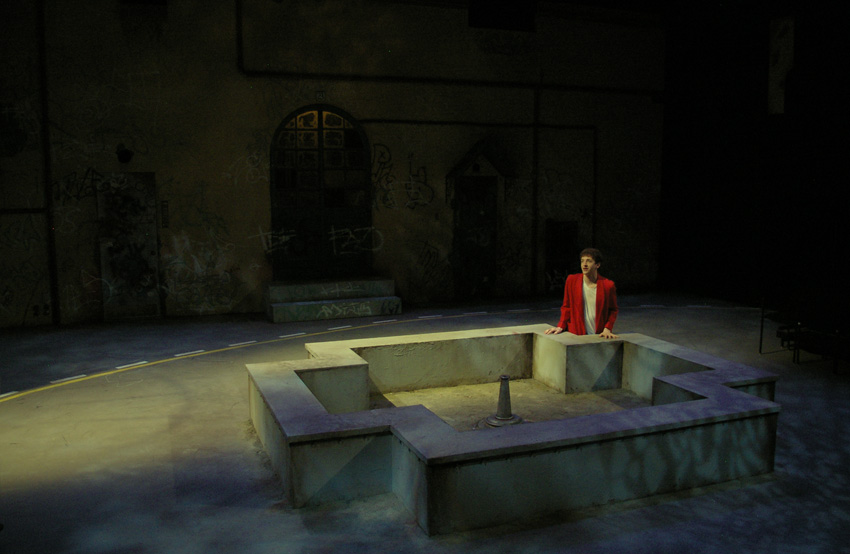
Romeo kneels behind the fountain as he discovers Juliet in her window. The dangerous, mysterious, textured night is pierced by the shaft of light from her room.
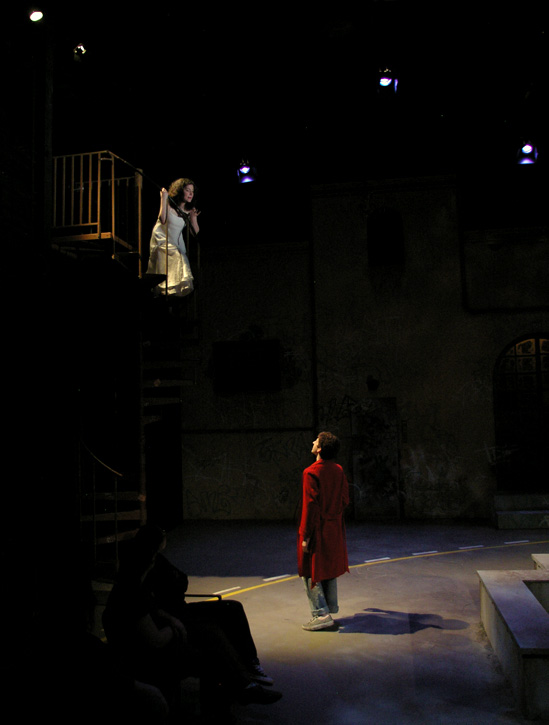
As Romeo gets closer to the stairs, the light from Juliet's room comes from a steeper angle. This room light is the primary source on Romeo and a backlight for Juliet. Her facelight is the moon.
The Fight
The major fight scene, in which Romeo kills Tybalt, takes place during what Barbra described as "the hottest part of the day." (see scene breakdown above) Here the weather is helping to fan the flames of passion and hatred between the two houses. Bright sunlight can be warm, inviting, revealing, and comfortable. But in our violent, passionate, visceral play, this hot sun is oppressive, painfully bright and suffocating.
The scene in performance
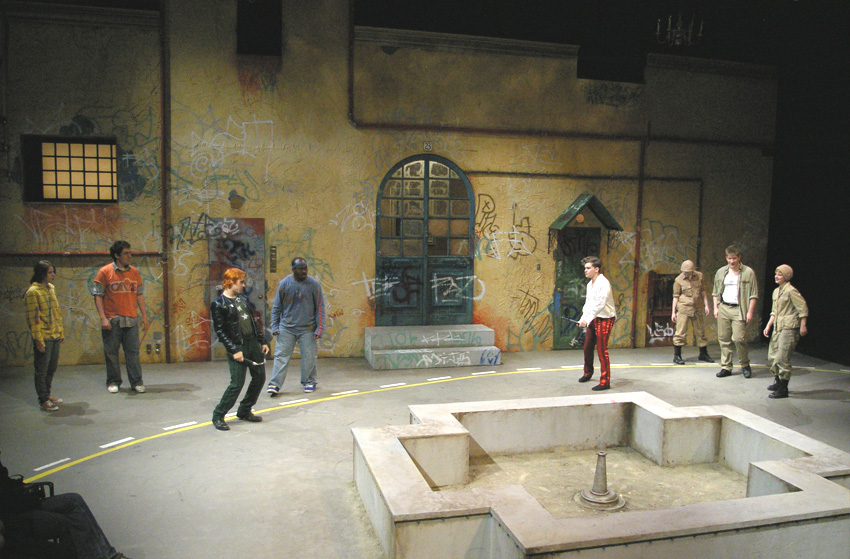
Tensions are reaching a breaking point as Mercutio and Tybalt square off in burning hot sun. Though this picture certainly looks like the light was bright, let me reiterate, this was BRIGHT. These cues were the brightest in the show.
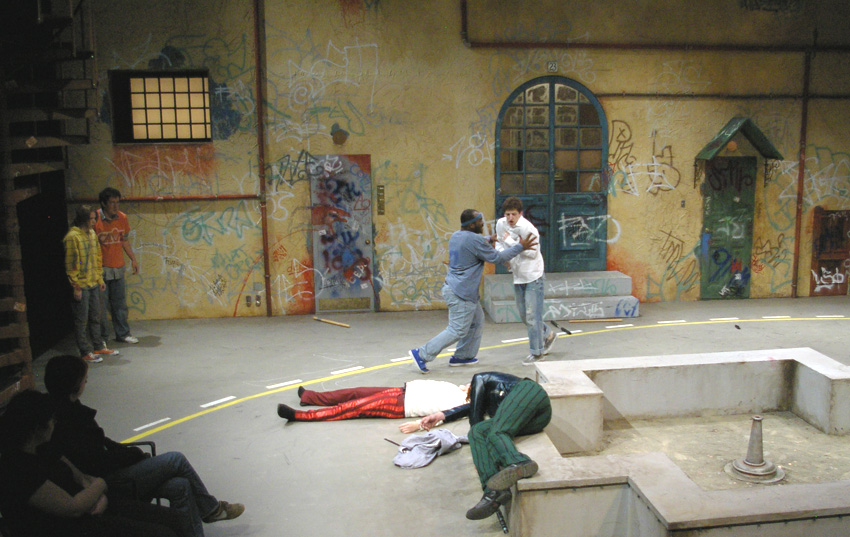
Romeo is horrified at what he has done. Benvolio urges him to get out of here.
O Lamentable Day!
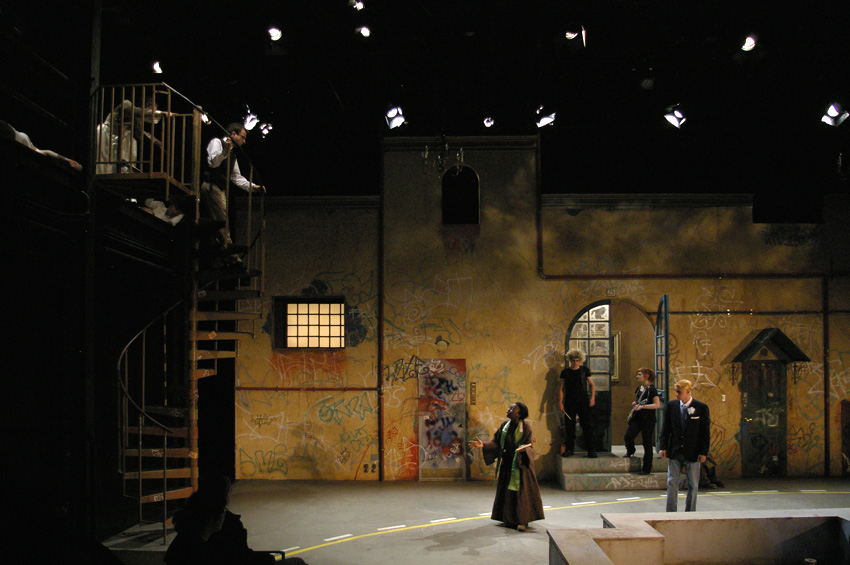
Early morning of the wedding day. The revealing, uncomfortable sun is just beginning to rise as Juliet's parents discover her lifeless body.
The low angle of the rising sun can be seen in this photo by the shadow of the young man standing in the doorway and the shadow of the friar which hits the set wall near the bottom of the stairs. Paris-the man with the white corsage-is also casting a shadow on the set wall just behind the Friar's right hand.
The Apothecary
Barbra had suggested that the scene in Mantua should have a feeling of metal city architecture, with light through or from within an architectural structure.

Romeo purchased the poison from the apothecary in the down center aisle, among the metal railings edging the seating sections. We used the house flourescent lights underneath the room-circling catwalk to augment the high-angle stage lights in this mysterious and foreboding look.
The Tomb
Juliet's tomb was characterized by shadow and a night look
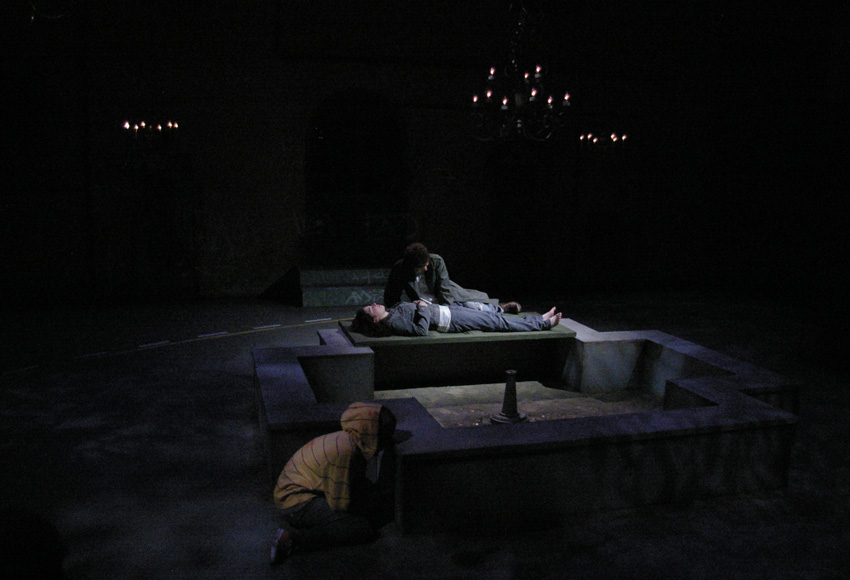
The nighttime textured look of the tomb was punctuated by subtle light cues that highlighted the action only as necessary.
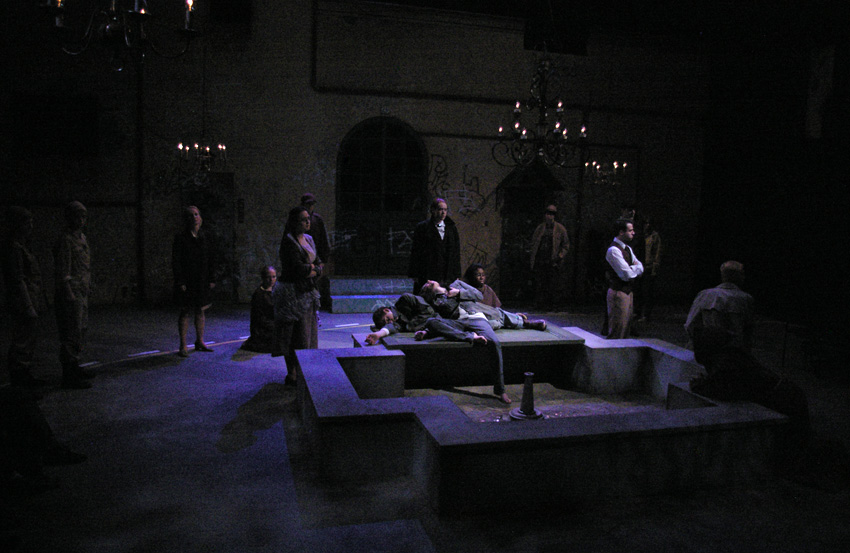
As the play concluded a hint of soft, muffled daylight began to envelope and brighten the stage.
There are more photos of this show on the Romeo & Juliet Gallery Page.
Return to Process Homepage
